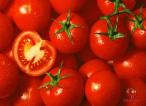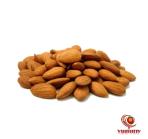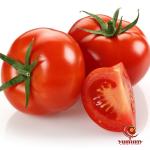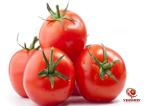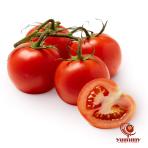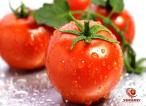Buy red tomato paste color + best price
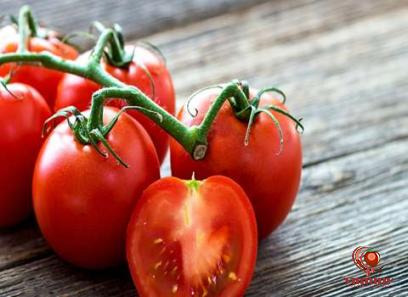
The rich red hue of tomato paste is not just visually appealing; it also signifies the concentrated essence of ripe, juicy tomatoes. As a staple ingredient in numerous culinary creations, tomato paste plays a crucial role in adding depth, complexity, and vibrant color to dishes. In this detailed guide, we delve into the fascinating world of red tomato paste color, exploring its origins, characteristics, uses, and significance in the culinary landscape. **The Origins of Red Tomato Paste Color** Tomato paste is derived from tomatoes that have been cooked down and strained to remove seeds and skin, resulting in a thick, concentrated product with a deep red color. The color of tomato paste is primarily influenced by the presence of specific pigments known as carotenoids, particularly lycopene. Lycopene is a naturally occurring red pigment that gives tomatoes their characteristic color and is responsible for the vibrant red hue of tomato paste. The process of making tomato paste involves reducing the water content of the tomatoes, which concentrates the lycopene and other pigments present in the fruit. As a result, tomato paste has a much more intense and vibrant red color compared to fresh tomatoes. The rich red hue of tomato paste not only enhances the visual appeal of dishes but also signifies the flavor intensity and depth that it brings to recipes. **Characteristics of Red Tomato Paste Color** The color of tomato paste can vary depending on various factors, including the variety of tomatoes used, the ripeness of the fruit, and the processing methods employed. While most tomato paste is characterized by a deep red color, variations in shade and intensity can occur. High-quality tomato paste typically exhibits a bright, vibrant red hue, signaling the presence of ample lycopene and other carotenoids.

.
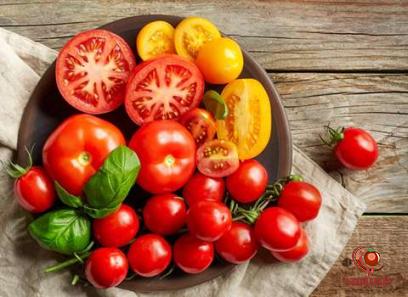 The color of tomato paste can also be influenced by storage conditions, exposure to light, and processing techniques. Improper storage or prolonged exposure to light can cause tomato paste to darken or develop off-color hues. However, when stored correctly in a cool, dark place, tomato paste can retain its vibrant red color for an extended period. **Uses of Red Tomato Paste Color in Cooking** The intense red color of tomato paste makes it a versatile ingredient in a wide range of culinary applications. From savory sauces and soups to stews, casseroles, and marinades, tomato paste adds depth, richness, and a vibrant hue to dishes. The concentrated flavor of tomato paste allows for a little to go a long way, making it a cost-effective and flavor-packed addition to recipes. In addition to enhancing the color and flavor of dishes, the red hue of tomato paste can also indicate ripeness, freshness, and quality. Bright, vibrant red tomato paste is often associated with high-quality ingredients and superior flavor. When used in cooking, the color of tomato paste intensifies as it simmers and melds with other ingredients, creating a rich, deep red base for a variety of dishes. **Significance of Red Tomato Paste Color in Culinary Art** The brilliant red color of tomato paste is not just visually appealing; it also plays a significant role in the artistry of cooking. Chefs and home cooks alike appreciate the vibrant hue of tomato paste for its ability to elevate the presentation of dishes and create visually striking compositions. The deep red color of tomato paste can lend a sense of warmth, depth, and richness to recipes, enhancing the overall dining experience. In addition to its aesthetic appeal, the color of tomato paste is also symbolic of the essence and character of the ingredient itself. The vibrant red hue represents the concentrated flavor, nutrients, and essence of ripe, sun-ripened tomatoes, serving as a testament to the quality and freshness of the product. When incorporated into dishes, the red color of tomato paste infuses meals with a burst of flavor and a touch of culinary artistry.
The color of tomato paste can also be influenced by storage conditions, exposure to light, and processing techniques. Improper storage or prolonged exposure to light can cause tomato paste to darken or develop off-color hues. However, when stored correctly in a cool, dark place, tomato paste can retain its vibrant red color for an extended period. **Uses of Red Tomato Paste Color in Cooking** The intense red color of tomato paste makes it a versatile ingredient in a wide range of culinary applications. From savory sauces and soups to stews, casseroles, and marinades, tomato paste adds depth, richness, and a vibrant hue to dishes. The concentrated flavor of tomato paste allows for a little to go a long way, making it a cost-effective and flavor-packed addition to recipes. In addition to enhancing the color and flavor of dishes, the red hue of tomato paste can also indicate ripeness, freshness, and quality. Bright, vibrant red tomato paste is often associated with high-quality ingredients and superior flavor. When used in cooking, the color of tomato paste intensifies as it simmers and melds with other ingredients, creating a rich, deep red base for a variety of dishes. **Significance of Red Tomato Paste Color in Culinary Art** The brilliant red color of tomato paste is not just visually appealing; it also plays a significant role in the artistry of cooking. Chefs and home cooks alike appreciate the vibrant hue of tomato paste for its ability to elevate the presentation of dishes and create visually striking compositions. The deep red color of tomato paste can lend a sense of warmth, depth, and richness to recipes, enhancing the overall dining experience. In addition to its aesthetic appeal, the color of tomato paste is also symbolic of the essence and character of the ingredient itself. The vibrant red hue represents the concentrated flavor, nutrients, and essence of ripe, sun-ripened tomatoes, serving as a testament to the quality and freshness of the product. When incorporated into dishes, the red color of tomato paste infuses meals with a burst of flavor and a touch of culinary artistry.
..
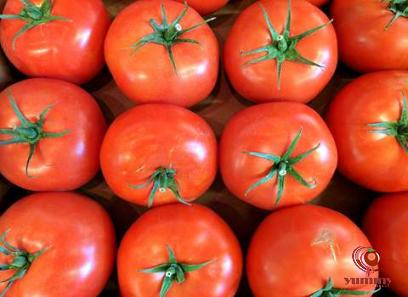 **Exploring Variations in Red Tomato Paste Color** While red is the most common and widely recognized color of tomato paste, variations in hue and intensity can occur based on different factors. Some tomato paste products may have a deeper, darker red color, while others may exhibit a more vibrant, bright red hue. These variations can be attributed to the specific variety of tomatoes used, the processing methods employed, and the presence of other ingredients or additives. In some cases, tomato paste may contain added ingredients such as sugar, salt, or preservatives, which can affect the color and overall appearance of the product. Additionally, certain varieties of tomatoes, such as heirloom or cherry tomatoes, may produce tomato paste with unique shades of red, ranging from crimson and scarlet to ruby and garnet. These variations in red tomato paste color offer chefs and consumers a diverse range of options to suit different culinary preferences and applications. **The Art of Selecting High-Quality Red Tomato Paste** When choosing red tomato paste for culinary purposes, it is essential to consider the quality, color, and ingredients of the product. High-quality tomato paste is characterized by a bright, vibrant red color, indicating the presence of ample lycopene and carotenoids. The consistency of tomato paste should be thick and velvety, with a rich, concentrated flavor that is both sweet and savory. It is advisable to opt for organic or all-natural tomato paste varieties that are free from additives, preservatives, and artificial colors. These products typically retain the natural red color of tomatoes and offer a purer, more authentic flavor profile. When shopping for red tomato paste, inspect the packaging for any signs of discoloration, mold, or spoilage, as these can indicate poor quality or improper storage. **Incorporating Red Tomato Paste Color into Your Culinary Creations** Whether you’re making a classic marinara sauce, a hearty beef stew, or a flavorful curry, red tomato paste color can elevate the visual appeal and flavor profile of your dishes. Experiment with different varieties of tomato paste to discover unique shades of red and nuanced flavor profiles that complement your recipes. When cooking with tomato paste, start with a small amount and adjust to taste, allowing the rich red color and robust flavor to shine through. Consider incorporating red tomato paste color into a variety of dishes, including pasta sauces, chili, soups, braises, and roasted vegetables.
**Exploring Variations in Red Tomato Paste Color** While red is the most common and widely recognized color of tomato paste, variations in hue and intensity can occur based on different factors. Some tomato paste products may have a deeper, darker red color, while others may exhibit a more vibrant, bright red hue. These variations can be attributed to the specific variety of tomatoes used, the processing methods employed, and the presence of other ingredients or additives. In some cases, tomato paste may contain added ingredients such as sugar, salt, or preservatives, which can affect the color and overall appearance of the product. Additionally, certain varieties of tomatoes, such as heirloom or cherry tomatoes, may produce tomato paste with unique shades of red, ranging from crimson and scarlet to ruby and garnet. These variations in red tomato paste color offer chefs and consumers a diverse range of options to suit different culinary preferences and applications. **The Art of Selecting High-Quality Red Tomato Paste** When choosing red tomato paste for culinary purposes, it is essential to consider the quality, color, and ingredients of the product. High-quality tomato paste is characterized by a bright, vibrant red color, indicating the presence of ample lycopene and carotenoids. The consistency of tomato paste should be thick and velvety, with a rich, concentrated flavor that is both sweet and savory. It is advisable to opt for organic or all-natural tomato paste varieties that are free from additives, preservatives, and artificial colors. These products typically retain the natural red color of tomatoes and offer a purer, more authentic flavor profile. When shopping for red tomato paste, inspect the packaging for any signs of discoloration, mold, or spoilage, as these can indicate poor quality or improper storage. **Incorporating Red Tomato Paste Color into Your Culinary Creations** Whether you’re making a classic marinara sauce, a hearty beef stew, or a flavorful curry, red tomato paste color can elevate the visual appeal and flavor profile of your dishes. Experiment with different varieties of tomato paste to discover unique shades of red and nuanced flavor profiles that complement your recipes. When cooking with tomato paste, start with a small amount and adjust to taste, allowing the rich red color and robust flavor to shine through. Consider incorporating red tomato paste color into a variety of dishes, including pasta sauces, chili, soups, braises, and roasted vegetables.
…
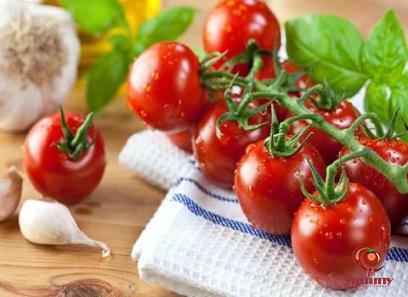 The vibrant hue of tomato paste can also be used to marinate meats, glaze vegetables, and add depth to dressings and condiments. By harnessing the brilliance of red tomato paste color, you can infuse your culinary creations with a burst of color, flavor, and artistry that delights the senses. **Conclusion** The red tomato paste color is not merely a visual aesthetic in the culinary world; it is a symbol of flavor, quality, and culinary artistry. From its origins in ripe, sun-ripened tomatoes to its vibrant hue in dishes, tomato paste color plays a crucial role in enhancing the depth, richness, and visual appeal of recipes. By understanding the characteristics, uses, and significance of red tomato paste color, chefs and home cooks can harness its brilliance to create delicious, visually stunning dishes that captivate the taste buds and delight the eyes. Experiment with red tomato paste color in your cooking endeavors and experience the magic of this versatile and essential ingredient in the culinary landscape. **The Health Benefits of Red Tomato Paste Color** In addition to its culinary appeal, the red color of tomato paste is also indicative of its potent nutritional profile. Tomatoes, the primary ingredient in tomato paste, are rich in essential nutrients such as vitamins A, C, and K, as well as antioxidants like lycopene. Lycopene, the key pigment responsible for the red color of tomatoes, is known for its health-promoting properties, including its potential to reduce the risk of chronic diseases such as heart disease and certain types of cancer. Research suggests that the lycopene content in tomatoes may help protect cells from damage caused by free radicals, thus potentially lowering the risk of oxidative stress and inflammation. Consuming foods rich in lycopene, such as tomato paste, has been associated with improved heart health, reduced cholesterol levels, and enhanced skin protection. The vibrant red color of tomato paste serves as a visual cue to its nutritional value, highlighting the abundance of beneficial compounds present in this concentrated ingredient. **Red Tomato Paste Color in Global Cuisine** The use of red tomato paste color is not limited to traditional Western dishes; it is a versatile ingredient that features prominently in a wide variety of global cuisines. From Italian pasta sauces and Spanish paellas to Indian curries and Middle Eastern stews, tomato paste adds depth, richness, and a vibrant red hue to a diverse range of recipes. The universal appeal of tomato paste lies in its ability to enhance the flavor and visual appeal of dishes across different culinary traditions. In Mediterranean cuisine, red tomato paste color is a cornerstone ingredient in classic dishes such as marinara sauce, ratatouille, and Greek moussaka. The rich red hue of tomato paste forms the base for many iconic recipes, infusing them with a deep, savory flavor and a touch of sweetness. Similarly, in Middle Eastern and North African cuisine, tomato paste is used to create robust, aromatic stews, tagines, and kebabs that showcase the vibrant red color and intense flavor of this essential ingredient.
The vibrant hue of tomato paste can also be used to marinate meats, glaze vegetables, and add depth to dressings and condiments. By harnessing the brilliance of red tomato paste color, you can infuse your culinary creations with a burst of color, flavor, and artistry that delights the senses. **Conclusion** The red tomato paste color is not merely a visual aesthetic in the culinary world; it is a symbol of flavor, quality, and culinary artistry. From its origins in ripe, sun-ripened tomatoes to its vibrant hue in dishes, tomato paste color plays a crucial role in enhancing the depth, richness, and visual appeal of recipes. By understanding the characteristics, uses, and significance of red tomato paste color, chefs and home cooks can harness its brilliance to create delicious, visually stunning dishes that captivate the taste buds and delight the eyes. Experiment with red tomato paste color in your cooking endeavors and experience the magic of this versatile and essential ingredient in the culinary landscape. **The Health Benefits of Red Tomato Paste Color** In addition to its culinary appeal, the red color of tomato paste is also indicative of its potent nutritional profile. Tomatoes, the primary ingredient in tomato paste, are rich in essential nutrients such as vitamins A, C, and K, as well as antioxidants like lycopene. Lycopene, the key pigment responsible for the red color of tomatoes, is known for its health-promoting properties, including its potential to reduce the risk of chronic diseases such as heart disease and certain types of cancer. Research suggests that the lycopene content in tomatoes may help protect cells from damage caused by free radicals, thus potentially lowering the risk of oxidative stress and inflammation. Consuming foods rich in lycopene, such as tomato paste, has been associated with improved heart health, reduced cholesterol levels, and enhanced skin protection. The vibrant red color of tomato paste serves as a visual cue to its nutritional value, highlighting the abundance of beneficial compounds present in this concentrated ingredient. **Red Tomato Paste Color in Global Cuisine** The use of red tomato paste color is not limited to traditional Western dishes; it is a versatile ingredient that features prominently in a wide variety of global cuisines. From Italian pasta sauces and Spanish paellas to Indian curries and Middle Eastern stews, tomato paste adds depth, richness, and a vibrant red hue to a diverse range of recipes. The universal appeal of tomato paste lies in its ability to enhance the flavor and visual appeal of dishes across different culinary traditions. In Mediterranean cuisine, red tomato paste color is a cornerstone ingredient in classic dishes such as marinara sauce, ratatouille, and Greek moussaka. The rich red hue of tomato paste forms the base for many iconic recipes, infusing them with a deep, savory flavor and a touch of sweetness. Similarly, in Middle Eastern and North African cuisine, tomato paste is used to create robust, aromatic stews, tagines, and kebabs that showcase the vibrant red color and intense flavor of this essential ingredient.


 Phone number:
Phone number:  WhatsApp Response:
WhatsApp Response:
